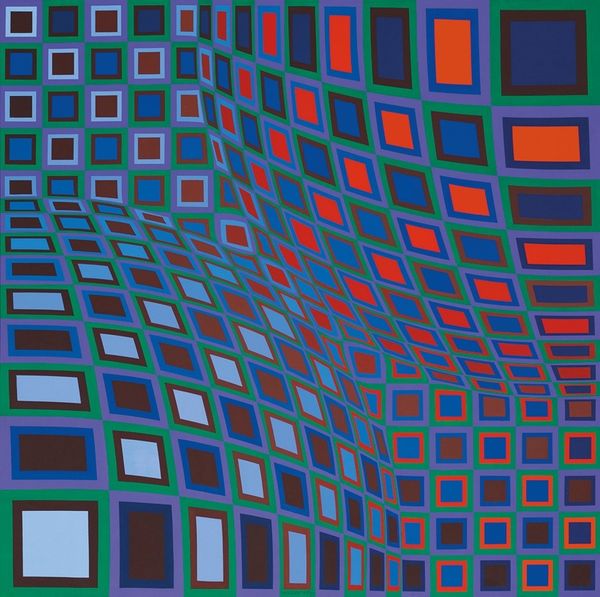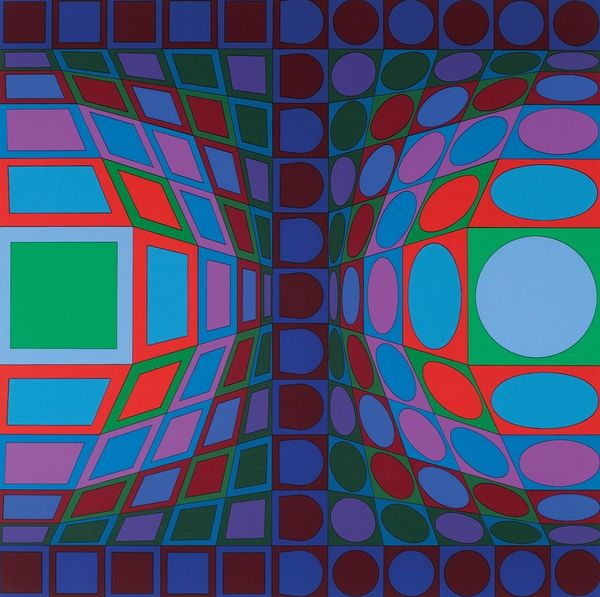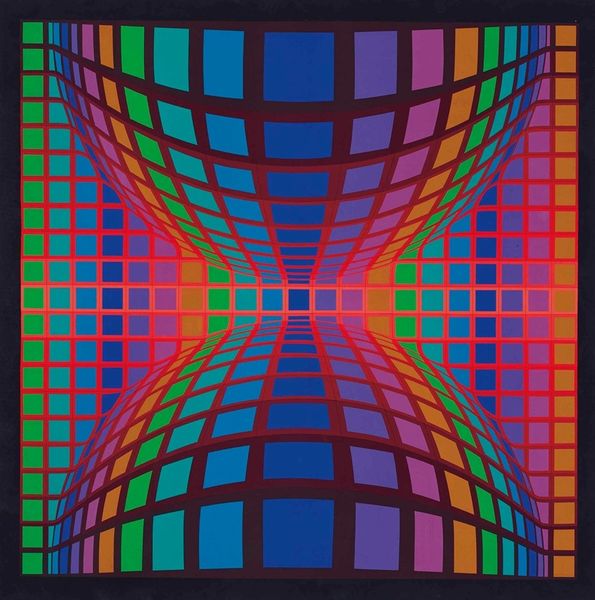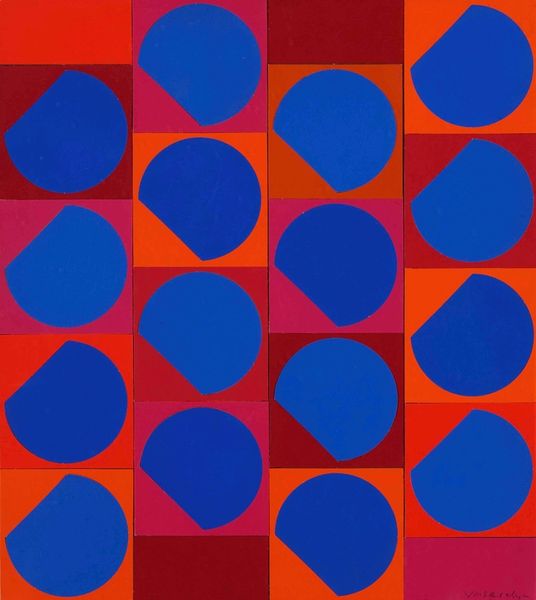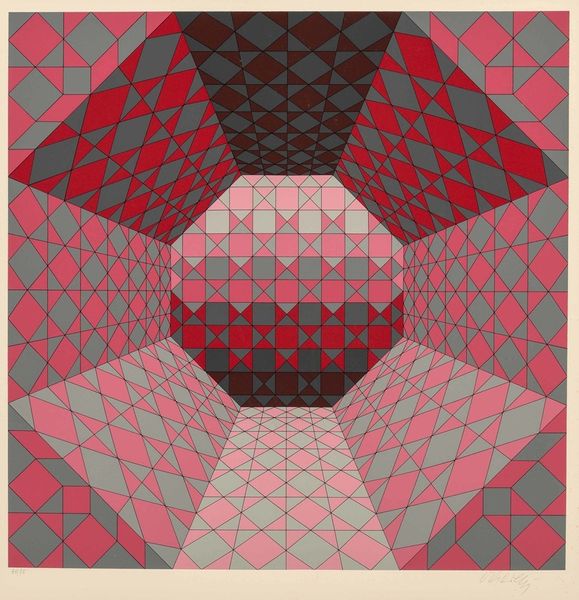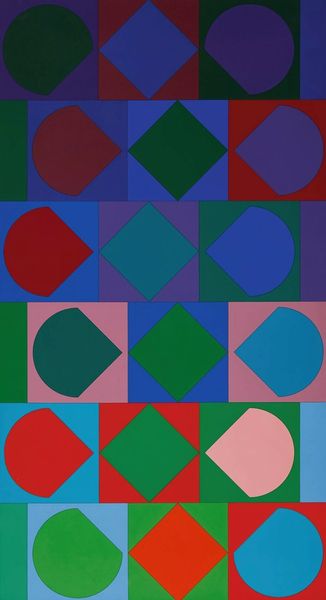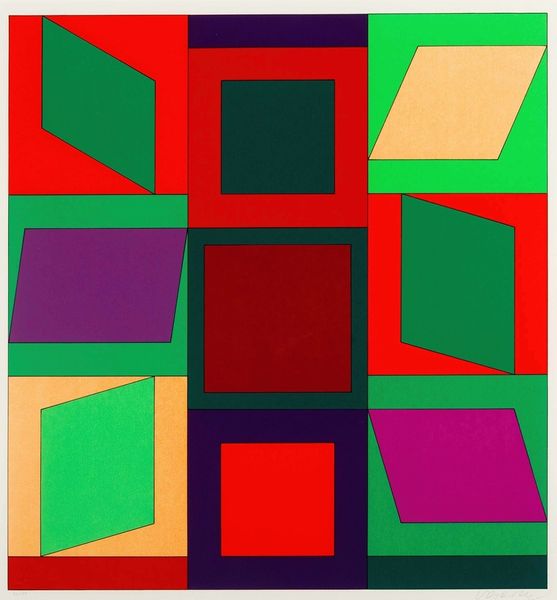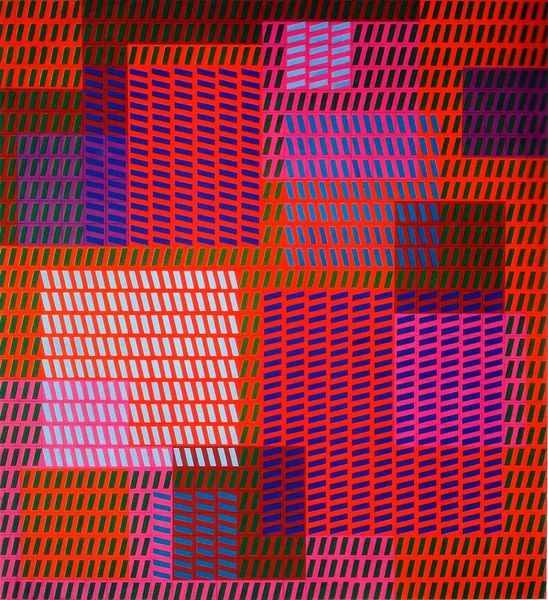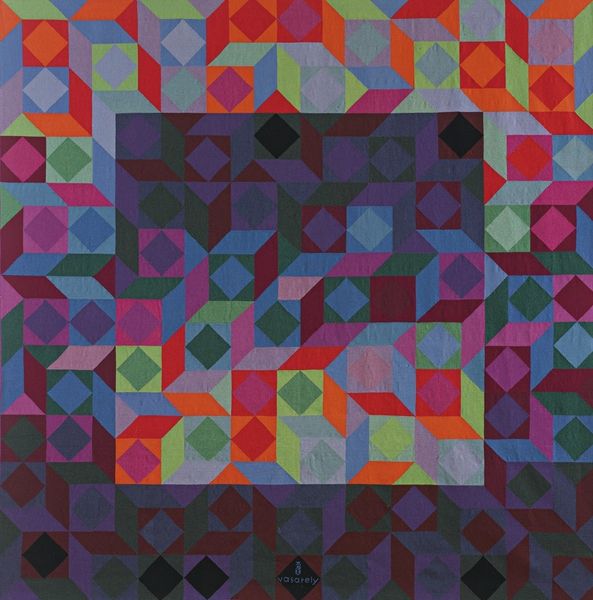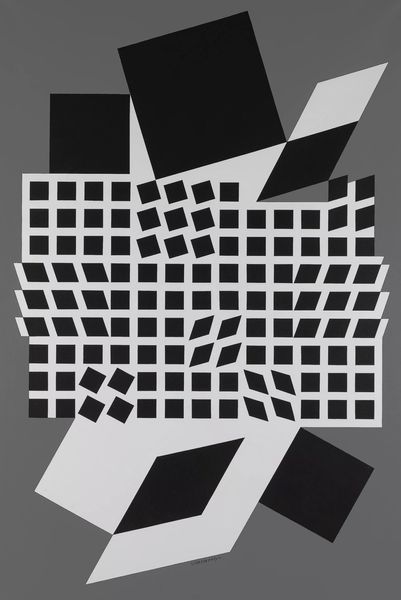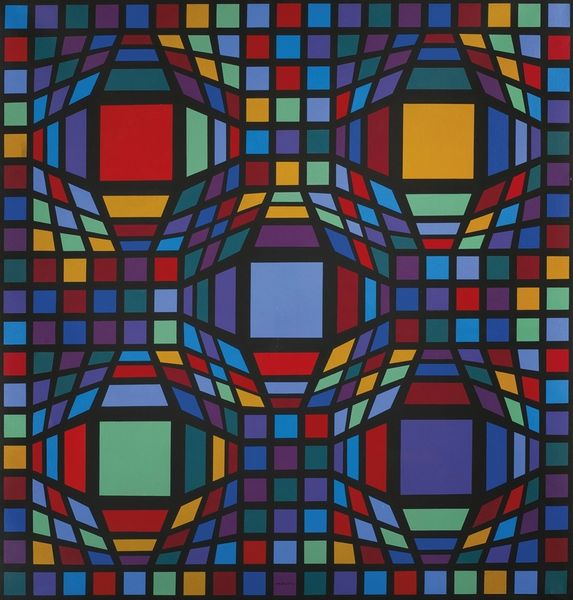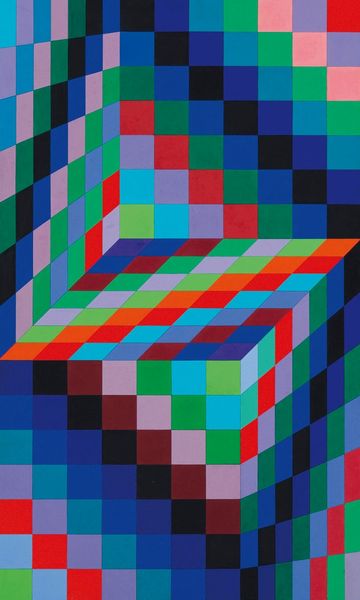
Copyright: Modern Artists: Artvee
Curator: This is "Dagann" by Victor Vasarely, created in 1972. Editor: Wow, it really pops! It looks like the squares are bulging out at me. It has an interesting almost playful mood, though it also feels very calculated. Curator: Absolutely. Vasarely was a key figure in the Op Art movement, and this piece exemplifies many of its central concerns: perception, spatial illusion, and the relationship between art and technology. He was quite invested in questioning traditional notions of the art object, thinking more about seriality and mass production. Editor: And that’s evident in his use of pattern here. Look how the repeated squares become modules of a larger visual experience. I'm thinking about the silkscreen techniques he often employed –the means by which the flat picture plane seems to undulate must have been appealing. Curator: The colours are crucial, aren't they? Their interactions and the way they are framed in black contribute so much to that pulsating effect. He called this the "plastic alphabet," modular shapes and colours that can be endlessly combined. I think he's intentionally destabilizing any sense of a fixed viewing position, reflecting the anxieties surrounding increasing industrialization and automation. Editor: Exactly! The material process speaks to that destabilization. It is a reproduction, potentially limitless in its edition, yet demanding careful registration and consideration of colour interplay. It almost anticipates digital screen displays – mass produced modules allowing infinite combinations that blur material touch and authored content. Curator: Thinking about those modular aspects connects interestingly with some ideas within post-structuralist theory. He offers a vocabulary that invites us to break down and recombine meaning... almost liberating the viewer, disrupting notions of artistic authority. Editor: This work invites us to think about the intersection between art, technology, and consumer culture in a dynamic way. A reminder of the ingenuity required in what is effectively mass-produced and marketed aesthetic experimentation. Curator: A work that continues to be relevant, raising questions about our ever-evolving relationship to a world of multiplying images. Editor: Definitely. It prompts us to ask what materials will be needed for the art of the future.
Comments
No comments
Be the first to comment and join the conversation on the ultimate creative platform.
